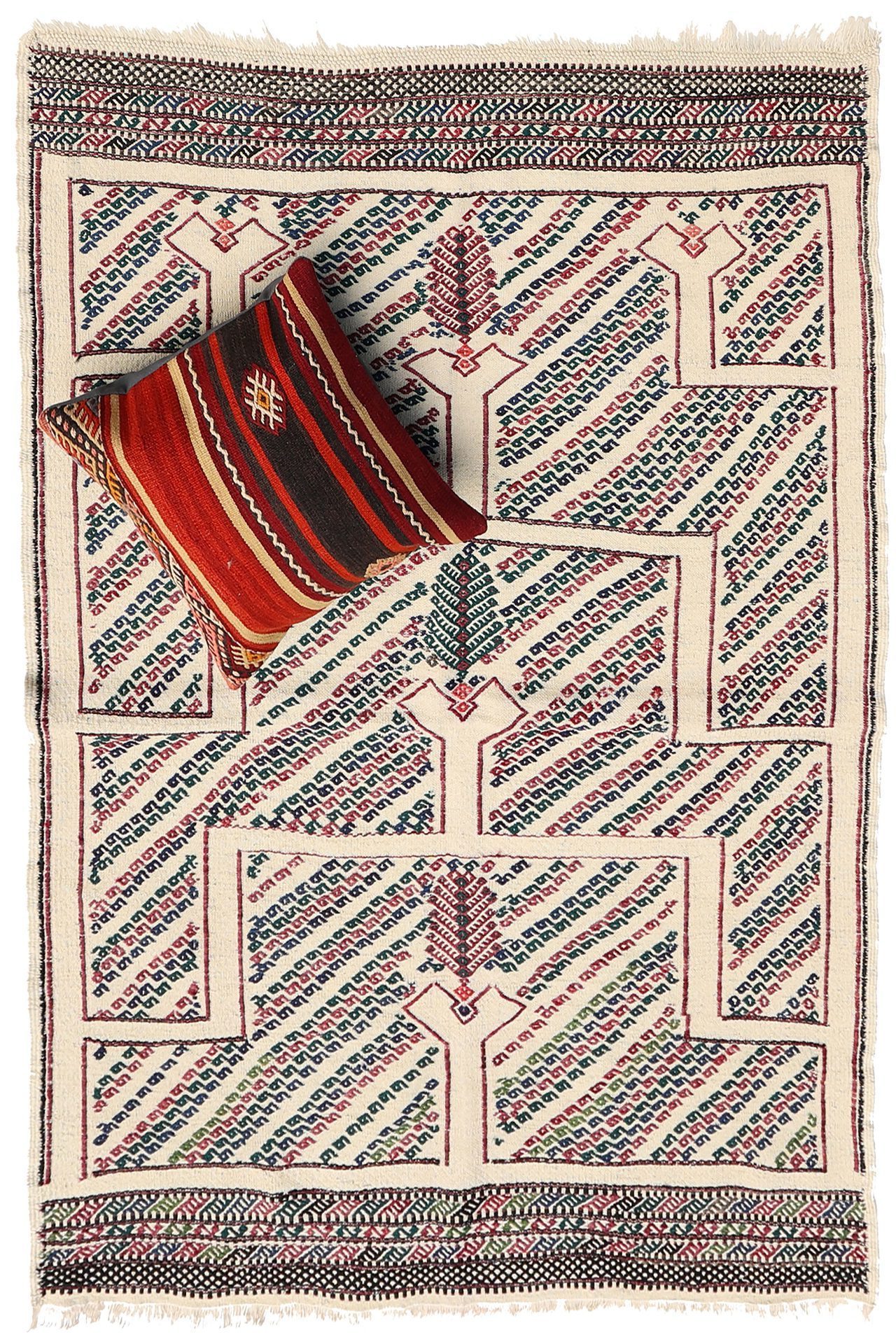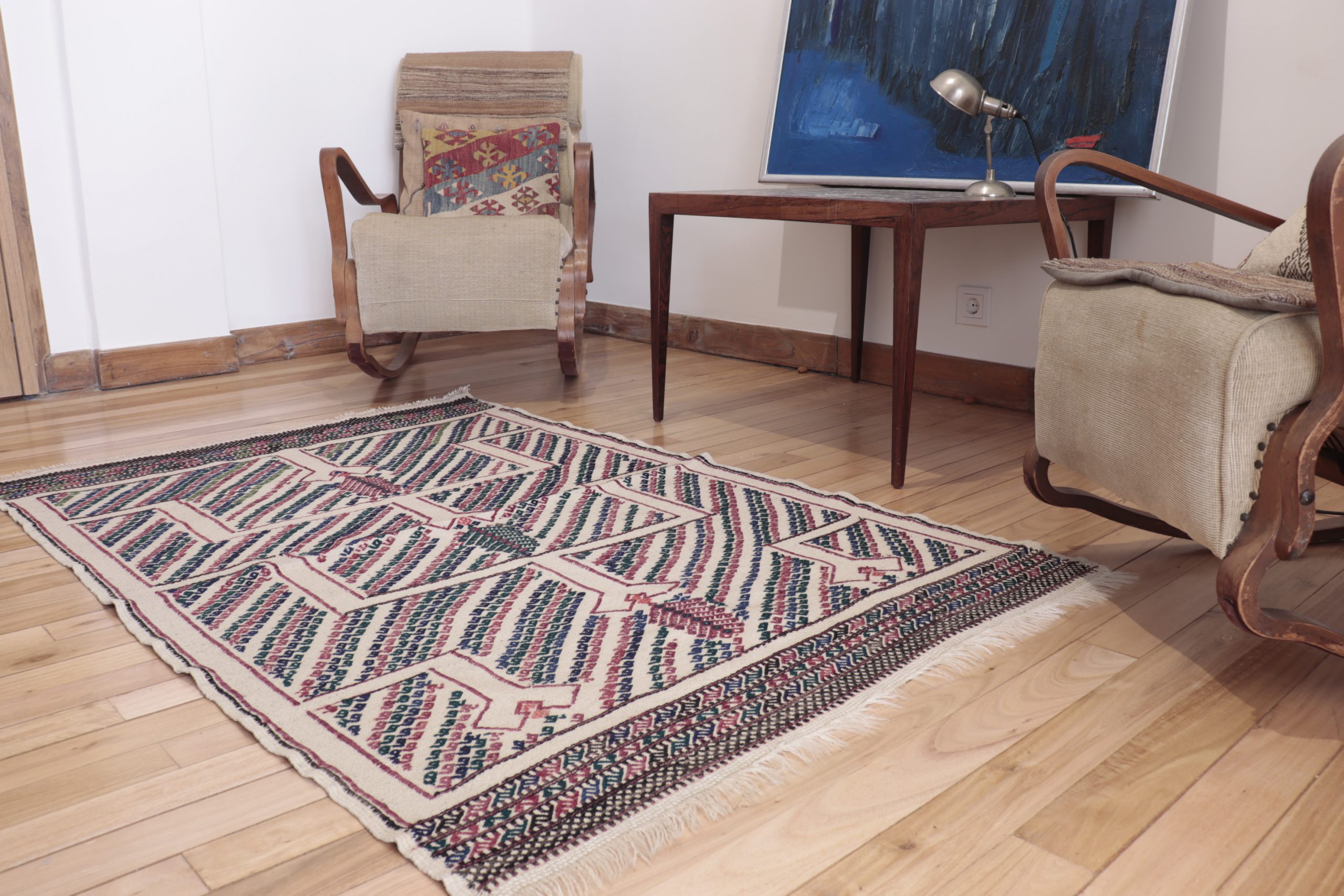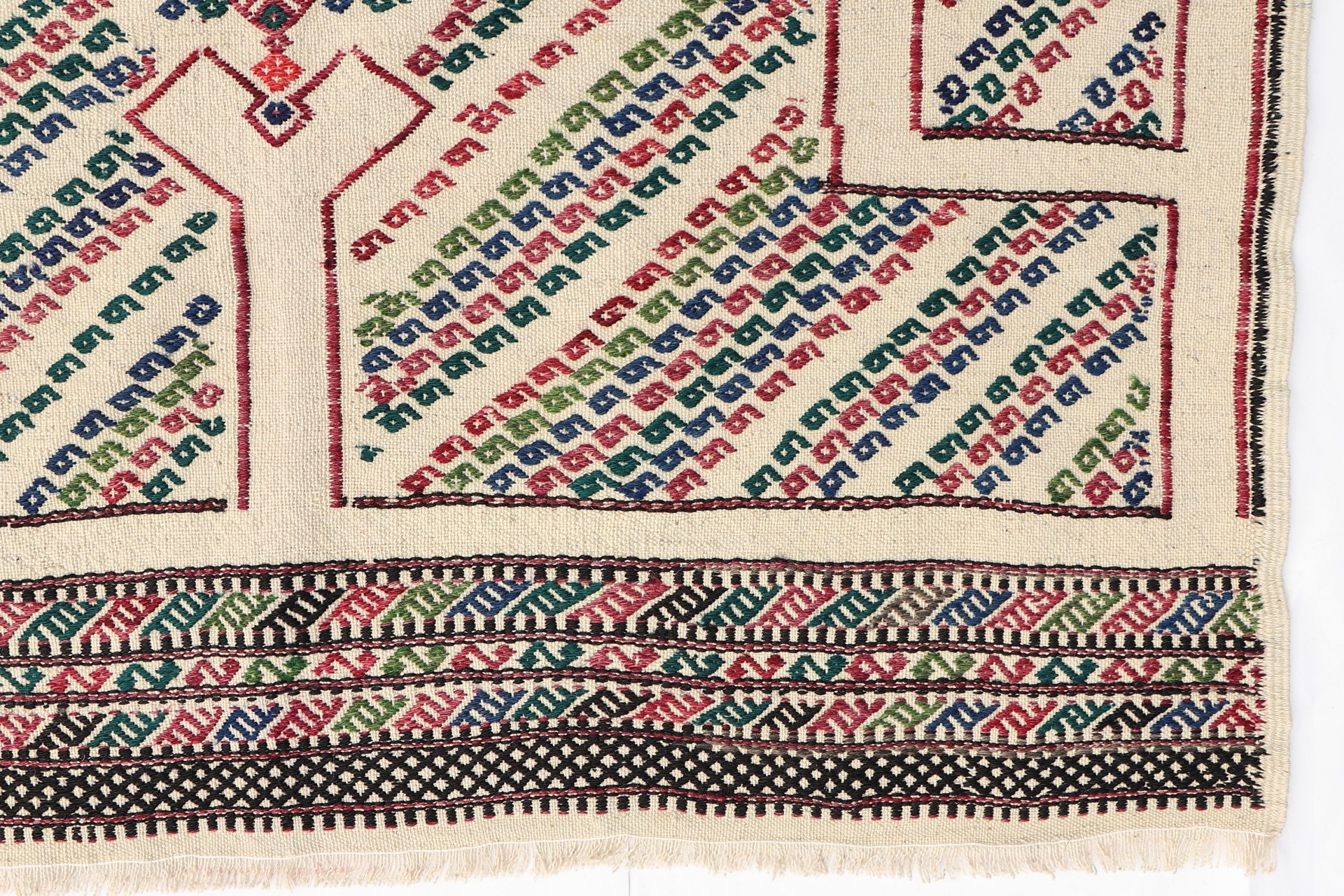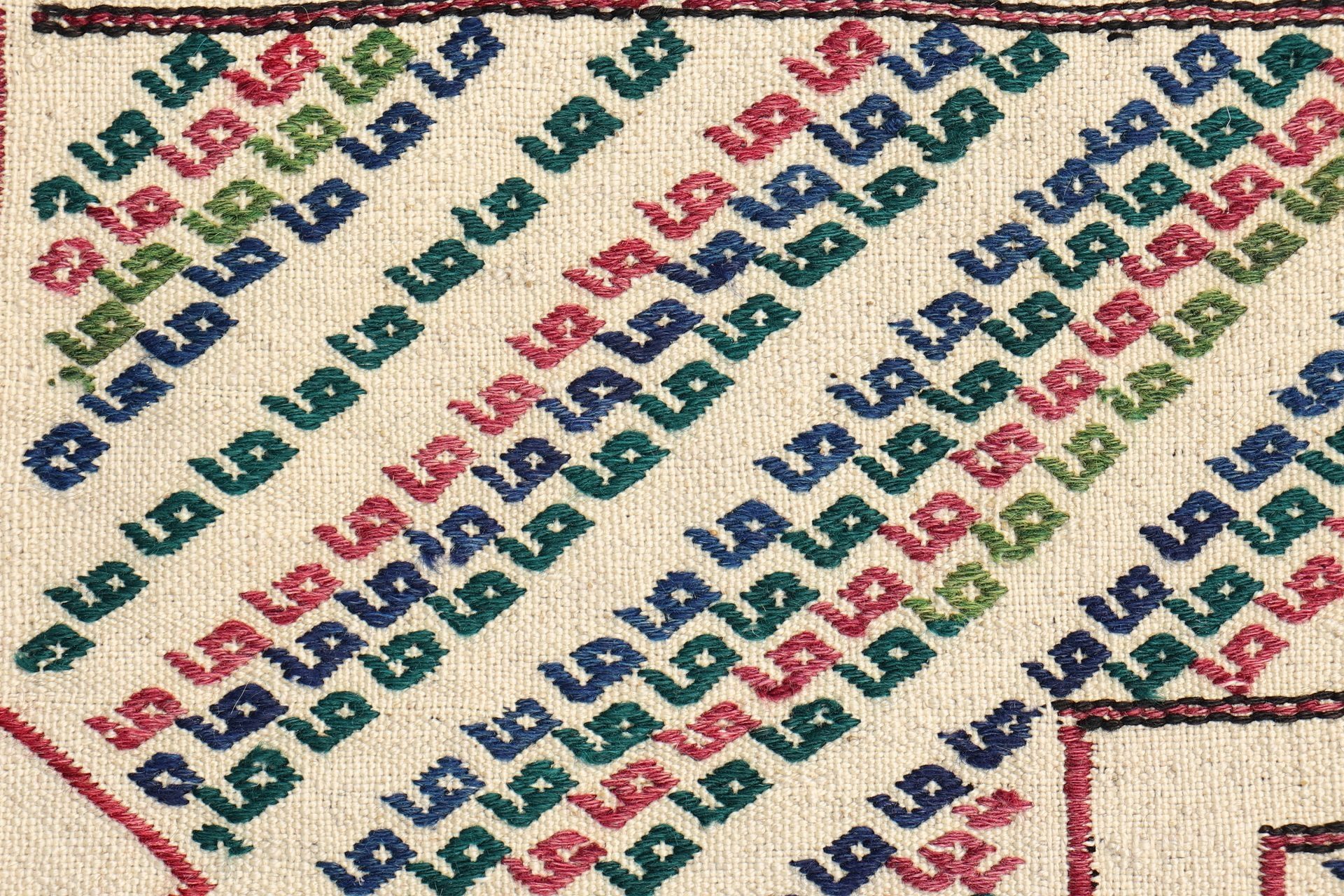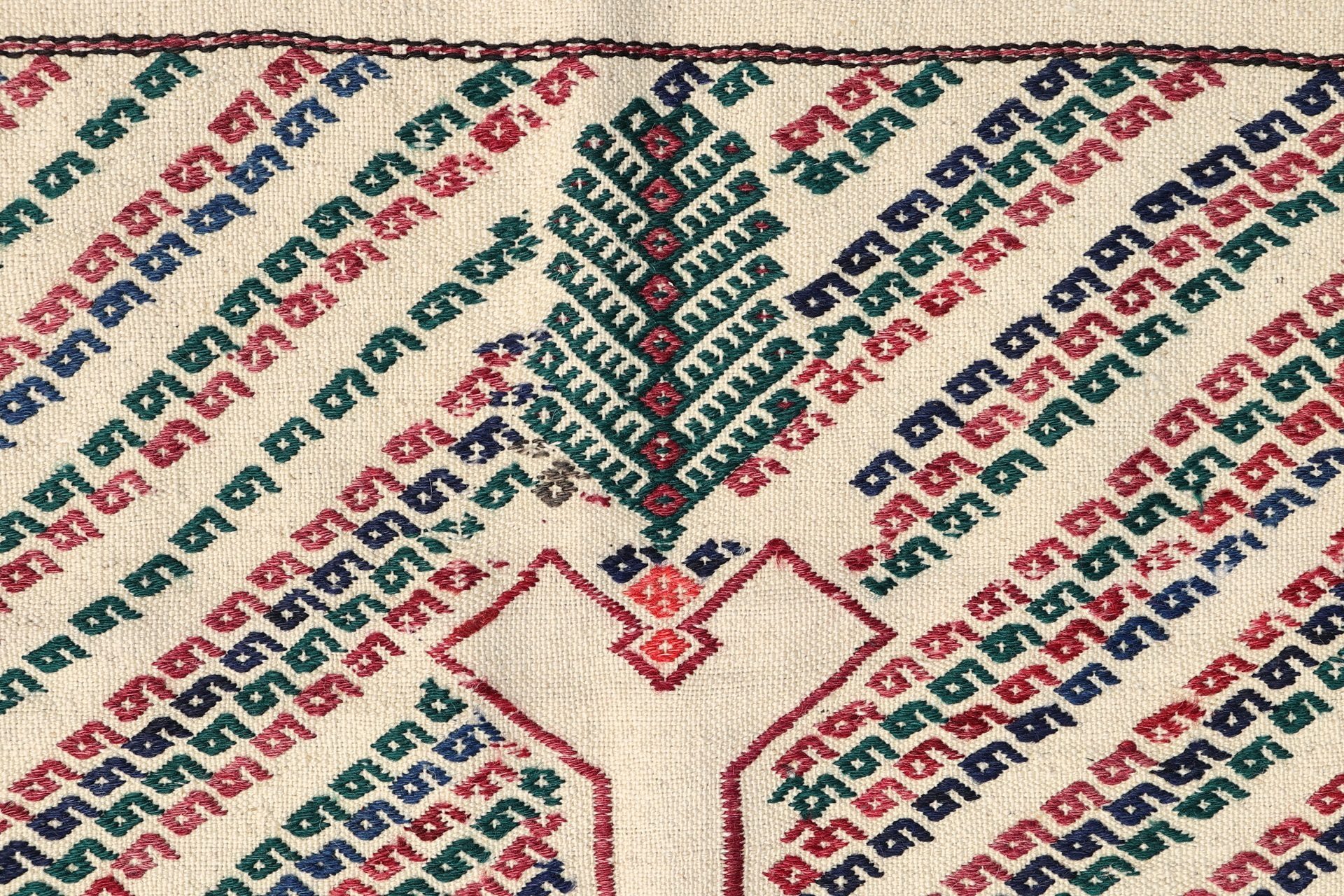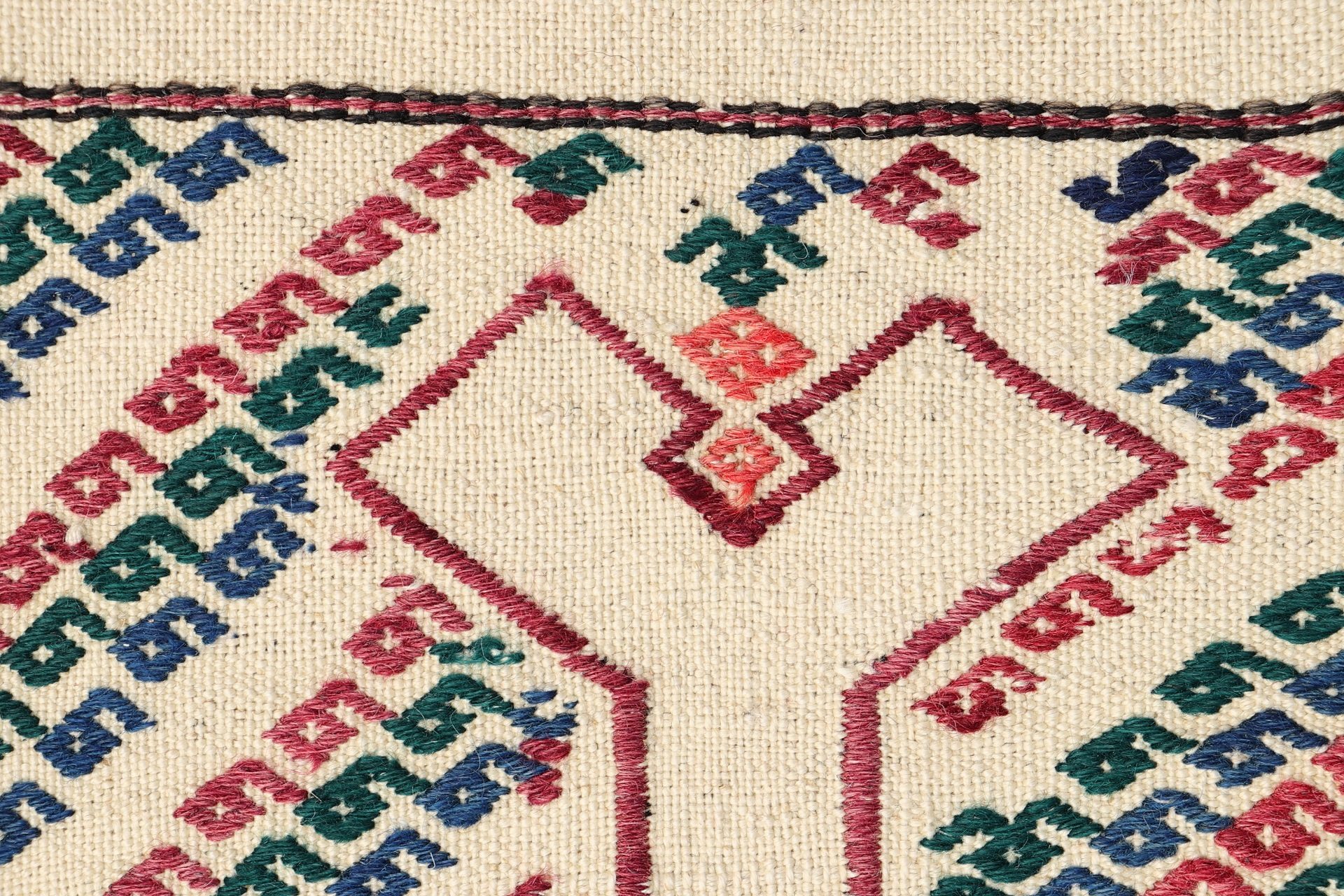1,450.00 €
Antique Kecimuhsine kilim from Turkey with the characteristic design of this village. The wool is finelly spun and all the dyes are natural. The kilim is finished off at one of the ends with a good plaited end.
The Çiçims of Kecimuhsine, a village near Konya, its particularly distinctive, and has a motive described as a ciprés on a white background. This pattern is peculiar to the village, some of the angular shapes that support the pattern of the tree are also found in the Karapinar kilims. Sometimes you can find good small çiçims, hanging in an important place behind the desk of rug and kilim dealers in Turkey. The white background of these kilims is decorated with color patterns in red, blue, brown, black and orange, and they have a generally light appearance.
This design is associated with the relevant beliefs of the area.
A finely woven kilim with high quality wool.
Material: 100% hand-spun sheep wool
Size: 165×110 cms
Origin: Keçimuhsine, Turkey
Date of weaving: 1930-40s
Küçükmuhsine Cicim Namazlağ: Namazlağs are woven with the cicim technique using wool material in the Küçükmuhsine region of Konya. In these examples, there are rectangular-shaped mihrab forms stacked on top of each other on the ground. Two of these mihrab forms were woven with exactly one of them left open. A motif called “kozak” is woven in the region, which is formed by “V” shapes decorated with diagonal lines on the edges placed on top of each other on a “Y” shaped base above the mihrab. This motif is called by this name because it resembles a pine cone. In some examples, this motif is woven onto the ground on both sides of the mihrab niches. The spaces left by the mihrab on the ground are filled with eye-like motifs placed on a diagonal line. Geometric motif water frames also decorate the prayer niches. There are three rows of additional edge water called “develi and çakı embroidery” in the region on the short side.
The cypress motif is used on tombstones, tiles and fabrics in many parts of Anatolia. The cypress tree is mostly grown in cemeteries. The cypress tree, which is associated with the belief in the afterlife, is seen in textiles as a symbol of religious beliefs. The cypress tree motif is seen on fabrics in a stylized or naturalistic style. It was especially used with great pleasure in 18th century patterns.
The tree of life has been accepted as the source of life, the symbol of peace, abundance, wisdom, eternity and immortality in many cultures. This respect and interest in trees has led to the formation of tree cults in societies and has been attributed spiritual meanings depending on where they are used.
In the spaces left from the niches of the mihrab, there are small geometric motifs similar to the eye motif, arranged diagonally on the ground. This motif has not been named in the region. Belkıs Acar compares this motif to the reverse version of the Arabic letter “vav” or the number “9”. She attributes meanings to this sequential motif as it may have been used as a prayer bead for worship purposes.
Fine water motifs called “develi” and “çakı dekorasyon” are seen on the edge waters in the region. These motifs are also seen on the edge waters of the cicim mats woven in Konya and its surroundings.
Based on the similarity of this motif to the hatap motif, it can be said that it resembles a human motif and that each of the shoulder motifs arranged on top of each other can be likened to the steps seen in Sufism. In the sources, it is accepted that the “hatap” motif on both the Keçimuhsine cicim rugs and the Karapınar hataplı carpet sample symbolizes the steps of the sufis or Alevis order.
1 in stock
Additional information
| Weight | 2.9 kg |
|---|
Subscribe and receive the lastest news
